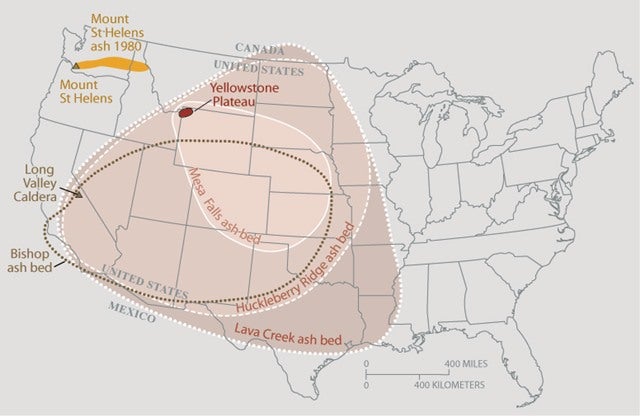What You Need to Know About Yellowstone Volcano
Kevin Felts 06.19.17

What would happen if the Yellowstone volcano were to erupt? It would be an event of Biblical proportions, along the lines of stuff we read about in history books, because this is not a regular volcano. It’s a super volcano. The last time it erupted was 640,000 years ago.
Why should we care? Because on June 16, 2017, there were more than 60 earthquake clusters in Yellowstone Park. Some of the events measured as high as 5.0 on the Richter scale.
Even though experts downplay the situation, in all honesty, what else would you expect them to do? The truth is, nobody knows when the Yellowstone volcano is going to erupt. It is not a matter of “if,” but “when.”
Regardless of what the experts say, each and every one of us can be prepared.
Historical Examples
Yellowstone volcano reminds of me Mount Vesuvius, Pompeii, and Herculaneum. “Don’t worry about it, everything will be fine.” When Mount Vesuvius erupted in 79 A.D., Pompeii and Herculaneum were covered with toxic gases and ash, and an estimated 16,000 people were killed.
In 1980, Mount St. Helens erupted. Shortly after the eruption, a video emerged of Dave Crockett near the volcano. Dave had felt something was going to happen, so he went to Mount St. Helens the day before the eruption (how’s that for timing?). He was able to record some iconic footage of the eruption.
One of the images from the video below has stayed with me since 1980: the dust and smoke. The cloud was so thick it blocked out the sun. And in his own words as recorded in the video below, “Oh dear God. My God this is hell. It’s hell on earth I’m walking through.”
Definitely not something anyone wants to experience.

In 2010, a volcano in Iceland disrupted air travel in North America and Northern Europe for 10 days.
In all three examples, things quickly went from bad to worse.
How Bad Could It Be
If Yellowstone were to erupt, how bad could it be?
Estimated distance from epicenter to estimated depth of ash layer (source: Supervolcano: Yellowstone’s Fury).
- 50 miles, nine feet of ash.
- 70 miles, six feet of ash.
- 124 miles, three feet of ash.
- 186 miles, two feet of ash.
- 500 miles, 6 inches.
50 mile radius from the epicenter, is a total area of 7,853 miles covered with nine feet of ash,
70 mile radius from the epicenter, is a total of 15,393 miles covered with six feet of ash.
Everything within 50 miles of the epicenter could expect temperatures up to 750 degrees Fahrenheit.
Basic Preps
People nearest the Yellowstone volcano could experience Pompeii and Herculaneum levels of gas and ash. So, have your bug-out bag ready to go and keep your vehicle filled with:
- Food
- Water
- Dust mask and goggles
- Bug out bag
- Cash
- Predetermined evacuation routes and backup routes
As with any other natural disaster, have a place to go outside the affected zone. When the Yellowstone volcano goes, the affected zone could be huge, so your destination may need to be friends or family members who live far away from Yellowstone.
Yellowstone Volcano
This is not a hurricane or forest fire, nor is this a regular volcano. It is a super volcano which scientists claim is way overdue for an eruption. We can not bury our heads in the sand and hope it goes away.
What we can do is to keep an eye on the news and be prepared.
